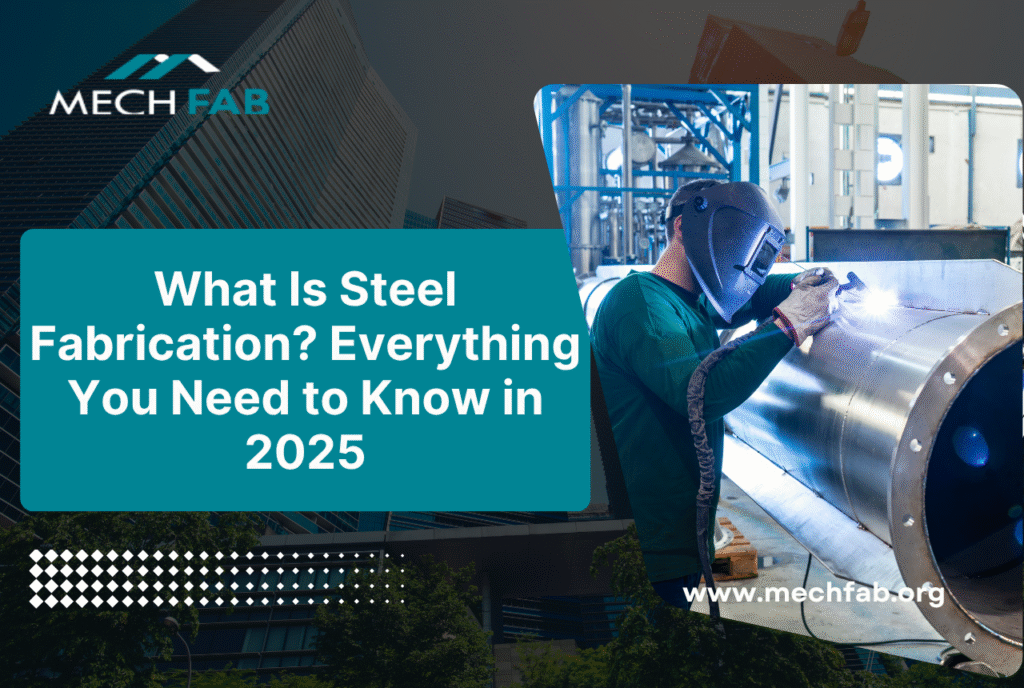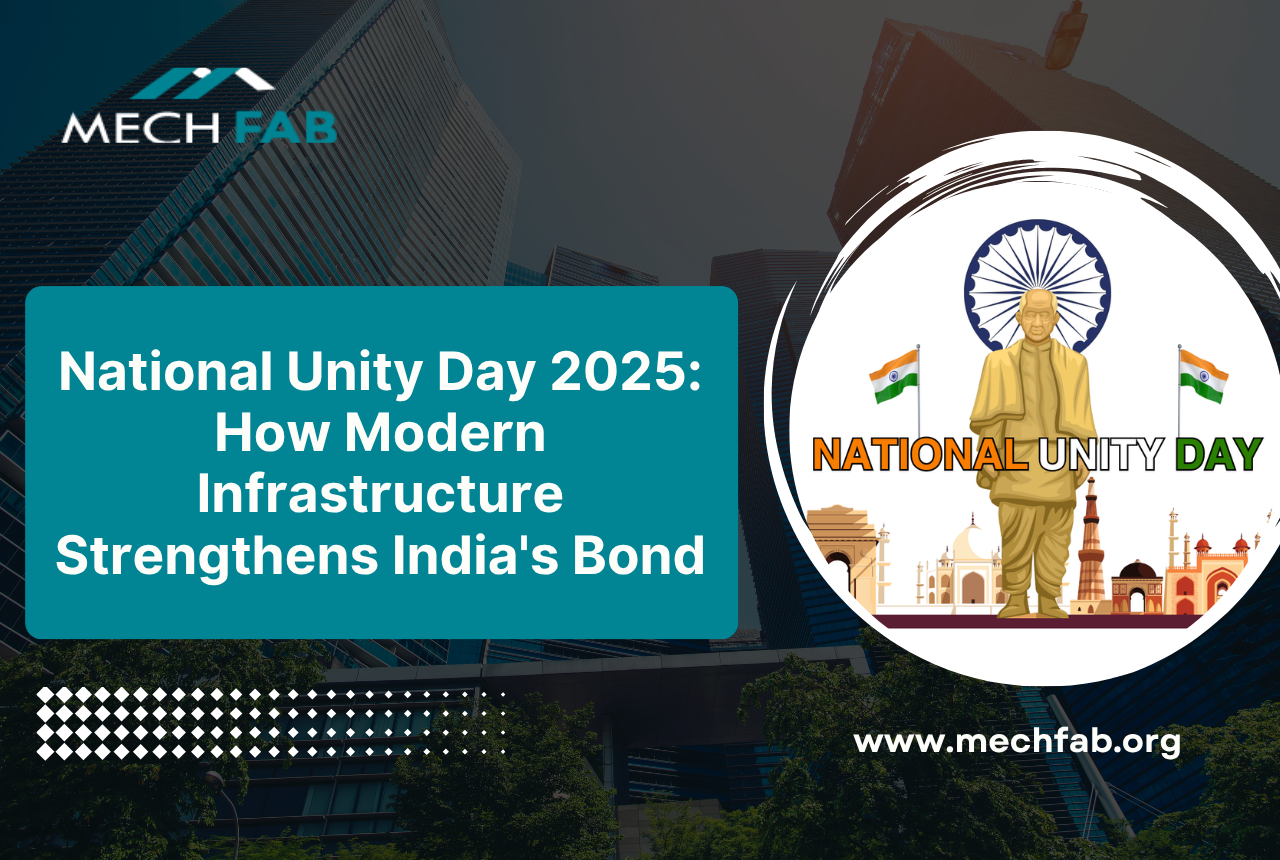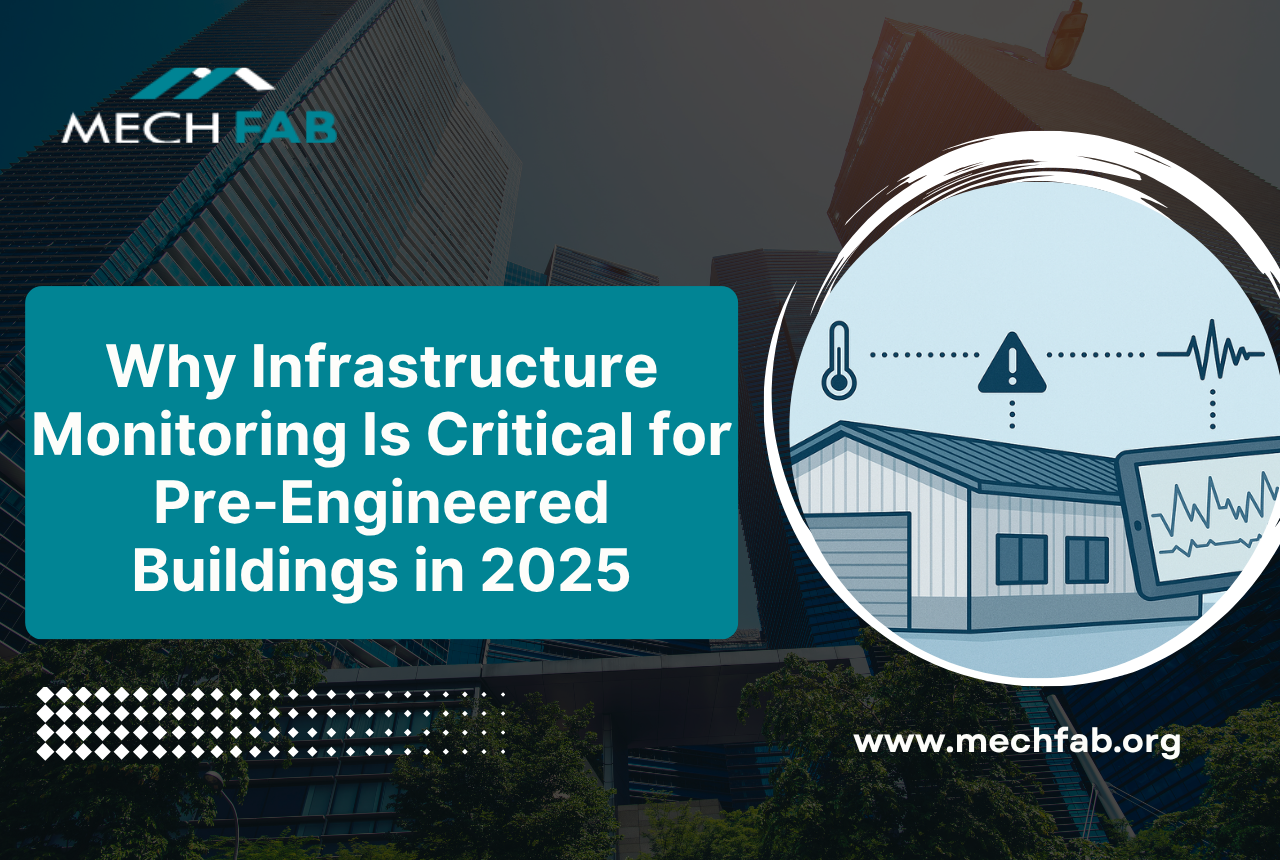Steel fabrication is the transformative process that turns raw metal into the structures, components, and products that power modern industry and construction. From towering commercial buildings and expansive bridges to precision machinery parts and architectural features, steel fabrication is the invisible force behind the infrastructure we depend on daily.
Whether you’re a construction manager planning your next project, an engineer specifying structural components, or a business owner exploring manufacturing options, understanding steel fabrication helps you make better decisions and achieve superior results. This process combines traditional craftsmanship with cutting-edge technology to deliver solutions that are strong, reliable, and precisely engineered.
In this comprehensive guide, we’ll explore what steel fabrication truly means, break down the essential processes involved, examine real-world applications across industries, and help you understand why professional steel fabrication services are critical to project success. By the end, you’ll have the knowledge to confidently approach your next steel fabrication project.
What Is Steel Fabrication? A Clear Definition
Steel fabrication is the creation of metal structures and components through a series of specialized processes including cutting, bending, welding, and assembling. It’s essentially the art and science of transforming raw steel materials into precisely engineered products designed for specific applications.
This value-added manufacturing process involves creating machines, parts, and structures from various raw materials, typically starting with structural steel and sheet metal as the primary materials. Unlike other metalworking processes such as casting, forging, or stamping, fabrication specifically refers to the combination of cutting, forming, and assembly techniques.
Think of steel fabrication as the bridge between engineering design and physical reality. Engineers create detailed specifications and drawings, and fabricators bring those designs to life through skilled craftsmanship and advanced manufacturing technology.
Key Characteristics of Steel Fabrication:
- Transforms raw steel into functional products and structures
- Combines multiple manufacturing processes in sequence
- Follows precise engineering drawings and specifications
- Delivers custom solutions tailored to specific requirements
- Maintains strict quality control throughout production
- Adheres to industry standards and safety regulations
Simply put, steel fabrication is basically transforming metal into the shape you need, whether that’s a massive structural beam, a complex machinery component, or an intricate architectural element.
The Complete Steel Fabrication Process: Step-by-Step
Understanding the steel fabrication workflow reveals the complexity and precision required to produce quality metal structures. Here’s how professional fabrication shops transform raw materials into finished products:
1. Design and Engineering
Every successful fabrication project begins with detailed design work. Engineers create technical drawings that specify exact dimensions, material grades, tolerances, and assembly requirements. Modern fabrication shops utilize Computer-Aided Design (CAD) software to generate precise 3D models that identify potential issues before production begins.
This planning phase is critical—it determines material requirements, identifies the most efficient fabrication methods, and establishes quality benchmarks that will guide the entire process.
2. Raw Material Selection and Procurement
Standard raw materials used in steel fabrication include plate metal, fittings, castings, formed and expanded metal, sectional metal, flat metal, and welding wire. Selecting the appropriate steel grade depends on factors like:
- Required strength and load-bearing capacity
- Environmental conditions (corrosion resistance needs)
- Operating temperature ranges
- Budget constraints
- Industry-specific standards and certifications
Common steel types include carbon steel for general applications, stainless steel for corrosion resistance, and alloy steel for specialized high-performance requirements.
3. Cutting: Precision Separation of Materials
Cutting is the first major fabrication step, accomplished through sawing, shearing, or chiselling with both manual and powered variants, as well as advanced methods like torching with oxy-fuel or plasma torches, and CNC cutters using lasers, mill bits, torches, or water jets.
Modern Cutting Methods Include:
- Laser Cutting: High-precision cuts with minimal material waste, ideal for complex shapes and thin materials
- Plasma Cutting: Fast cutting through electrically conductive materials, excellent for thick steel plates
- Waterjet Cutting: Cold cutting process that prevents heat distortion, perfect for heat-sensitive materials
- Shearing: Clean straight cuts through sheet metal using powerful hydraulic or mechanical shears
- Bandsaw Cutting: Traditional method for cutting structural shapes and tubing
Burn tables with CNC controls allow computer-operated cutting torches to follow programmed patterns, with higher-end systems including punch capability using carousels of punches and taps.
4. Bending and Forming: Shaping the Metal
Bending is accomplished by hammering (manual or powered) or via press brakes, tube benders, and similar tools, with modern fabricators using press brakes to coin or air-bend metal sheet into form. The forming process converts flat sheet metal into three-dimensional parts by applying controlled force without adding or removing material.
The applied force must be great enough to change the metal’s initial shape permanently, creating angles, curves, and complex geometries. CNC-controlled backgauges use precise positioning to place bend lines exactly where specified in the engineering drawings.
Common Forming Operations:
- Press brake bending for creating angles and channels
- Roll forming for curves and cylinders
- Stamping for repetitive shapes
- Tube bending for piping and handrails
Proper design and use of tools with machinery creates a repeatable form that can be used to create products for many industries, including jewellery, aerospace, automotive, construction, civil and architectural applications.
5. Machining: Precision Refinement
While fabrication focuses on assembly, many shops include machining capabilities to add precision features. Machining is a specialized trade of removing material from a block of metal to make it a desired shape, with fab shops generally having capability using metal lathes, mills, drills, and other portable machining tools.
Machining operations include:
- Drilling holes for fasteners and connections
- Threading for bolted assemblies
- Milling slots and pockets
- Turning cylindrical features
- Surface finishing for tight tolerances
6. Welding and Assembly: Joining the Components
Welding is the main focus of steel fabrication, where formed and machined parts are assembled and tack-welded in place, then rechecked for accuracy. This critical phase permanently joins separate steel components into cohesive structures.
If multiple weldments have been ordered, a fixture may be used to locate parts for welding, and a welder then finishes the work according to engineering drawings for detailed welding or by their own experience and judgment if no details are provided.
Primary Welding Methods:
- MIG Welding (GMAW): Fast and versatile, ideal for production welding
- TIG Welding (GTAW): Precise and clean, best for critical joints and thin materials
- Stick Welding (SMAW): Reliable for outdoor and heavy structural work
- Flux-Cored Arc Welding (FCAW): High deposition rates for thick materials
Special measures may be needed to prevent or correct warping of weldments due to heat, including redesigning pieces to require less welding, employing staggered welding, using stout fixtures, covering weldments in sand as they cool, and post-weld straightening.
7. Surface Treatment and Finishing
After fabrication and welding, components undergo surface treatment to enhance appearance, prevent corrosion, and prepare for final delivery. After weldments have cooled, seams are usually ground clean, and assemblies can be sandblasted, primed and painted.
Common Finishing Processes:
- Sandblasting to remove scale and contamination
- Powder coating for durable, attractive finishes
- Hot-dip galvanizing for maximum corrosion protection
- Painting with industrial-grade coatings
- Anodizing for aluminum components
- Chrome plating for decorative applications
Steel weldments are occasionally annealed in low-temperature ovens to relieve residual stresses, particularly those for engine blocks which may be line-bored after heat treatment.
8. Quality Inspection and Shipping
The final step ensures every fabricated component meets specifications before leaving the shop. Any additional manufacturing is then performed, and finished products are inspected and shipped.
Quality control measures include:
- Dimensional verification against drawings
- Weld inspection and non-destructive testing
- Surface finish evaluation
- Load testing for structural components
- Documentation and certification
Types of Steel Fabrication Work
Steel fabrication encompasses diverse specialties, each serving specific industry needs and applications:
Structural Steel Fabrication
This focuses on creating load-bearing frameworks for buildings, bridges, and infrastructure. Structural steel is among the usual materials for fabrication, used to produce beams, columns, trusses, and girders that form the skeleton of commercial and industrial structures. These components must meet stringent engineering standards to ensure safety and durability under extreme loads.
Industrial and Manufacturing Fabrication
Steel fabrication produces components including steel structure, steel components, and steel spare parts that serve industries such as energy and mining, construction, warehouse facilities, architecture, infrastructure, lighting, transportation, coatings, and industrial and civil applications.
Manufacturing facilities require custom steel solutions for:
- Machinery frames and housings
- Material handling systems
- Production line equipment
- Safety platforms and walkways
- Storage systems and racks
Architectural and Decorative Fabrication
When aesthetics matter as much as function, architectural fabrication delivers. This specialty creates:
- Custom railings and balustrades
- Ornamental metalwork and sculptures
- Decorative building facades
- Designer staircases and features
- Artistic installations
Precision Component Fabrication
Steel fabrication services handle projects ranging from steel handrails and cages to ladder assemblies, trusses, steel water tanks, silos, and stainless steel components, demonstrating the versatility of modern fabrication capabilities.
Real-World Applications of Steel Fabrication
Steel fabrication serves virtually every sector of the modern economy. Understanding these applications helps you recognize the scope and importance of professional fabrication services.
Construction and Building Industry
- Commercial building frameworks
- Pre-engineered metal buildings (PEB)
- Residential steel framing
- Reinforcement bars and structural supports
- Mezzanines, platforms, and catwalks
Infrastructure Development
- Bridge girders and supports
- Highway barriers and guardrails
- Stadium and arena structures
- Airport terminals and hangars
- Railway infrastructure
Manufacturing and Industrial
- Conveyor systems and material handling
- Storage tanks and pressure vessels
- Machine bases and equipment frames
- Safety enclosures and guarding
- Lifting and rigging equipment
Energy Sector
- Oil and gas pipeline supports
- Wind turbine towers and foundations
- Solar panel mounting systems
- Power plant infrastructure
- Transmission tower components
Commercial and Retail
- Store fixtures and display systems
- Restaurant equipment and counters
- Office furniture frameworks
- Signage and branding structures
- Point-of-sale systems
Why Professional Steel Fabrication Matters
Choosing experienced steel fabrication services offers significant advantages that directly impact project outcomes:
Superior Engineering and Expertise
Professional fabricators provide experience in fabricating and controlling production quality compliant with Australian Standards, American Standards, and European Standards, as well as other standards platforms with high-quality control. This expertise ensures your project meets industry requirements and performs as designed.
Advanced Technology and Capabilities
Modern fabrication shops invest heavily in technology that delivers:
- CNC precision cutting and forming equipment
- Robotic welding for consistent quality
- 3D modeling and simulation software
- Automated quality control systems
- Real-time project tracking and reporting
Comprehensive Service Offerings
Many fabrication shops can handle all types of custom projects from complex structural steel components to small fabricated parts, offering short-run or high-volume projects with fast turnaround for custom fabrication.
Professional shops provide:
- Design engineering support and optimization
- Material procurement and management
- Complete fabrication services under one roof
- Secondary operations like machining and finishing
- Logistics and installation coordination
Quality Assurance and Standards Compliance
Reliable quality assurance processes, complete secondary operations, and initial sample submission ensure products meet specifications before full production. This systematic approach minimizes costly errors and delays.
Cost Control and Efficiency
By managing the entire process, fabricators can control costs, stock, and quality to deliver projects on time and on budget. Integrated services eliminate coordination challenges between multiple vendors and reduce overall project timelines.
Choosing the Right Steel Fabrication Partner
Selecting a qualified fabrication shop significantly impacts project success. Evaluate potential partners based on these critical factors:
Technical Capabilities
- Range of services offered (cutting, forming, welding, finishing)
- Equipment technology and maintenance
- Capacity to handle your project size and complexity
- Specialty processes or niche expertise
Experience and Reputation
- Years in business and project portfolio
- Industry-specific experience relevant to your needs
- Client testimonials and case studies
- Problem-solving track record
Quality Systems
- Certifications (ISO 9001, AWS, AISC)
- Documented quality control procedures
- Inspection and testing capabilities
- Traceability and documentation practices
Engineering Support
- In-house design and engineering services
- Value engineering capabilities
- Design for manufacturability expertise
- Technical consultation availability
Project Management
- Clear communication protocols
- Timeline commitment and reliability
- Change management procedures
- Progress reporting systems
Location and Logistics
- Proximity to your project site
- Shipping capabilities and experience
- Installation services if needed
- Emergency responsiveness
The Future of Steel Fabrication Technology
The steel fabrication industry continues evolving with technological innovation that promises greater efficiency, precision, and sustainability:
Automation and Robotics Automated welding cells, robotic material handling, and unmanned cutting systems increase consistency while reducing labor requirements and production times.
Advanced Software Integration Building Information Modeling (BIM), real-time production tracking, and AI-powered design optimization streamline workflows from concept to completion.
Additive Manufacturing 3D metal printing complements traditional fabrication for complex geometries and rapid prototyping, though conventional methods remain more cost-effective for most applications.
Sustainable Practices Energy-efficient equipment, waste minimization strategies, and increased recycling reduce environmental impact while maintaining profitability.
Smart Manufacturing Internet of Things (IoT) sensors monitor equipment performance, predict maintenance needs, and ensure consistent quality throughout production.
Metal Fabrication vs. Steel Fabrication: Understanding the Distinction
Metal fabrication is the creation of metal structures by cutting, bending, and assembling processes, a value-added process involving the creation of machines, parts, and structures from various raw materials. This broader term encompasses work with diverse metals including aluminium, copper, brass, bronze, and steel.
Steel fabrication specifically refers to working exclusively with steel materials and alloys. Steel fabricators specialize in understanding how different steel grades respond to heat, pressure, and forming processes—knowledge that directly impacts final product quality.
A fabricated product may be called a fabrication, and shops specializing in this type of work are called fab shops. While some shops handle multiple metals, specialized steel fabricators often deliver superior outcomes for steel-specific projects due to their focused expertise.
Specialty Processes in Modern Fabrication Shops
Beyond core fabrication services, many shops offer specialized capabilities that add value and expand possibilities:
Metal Spinning Creates seamless cylindrical or conical shapes by rotating metal against forming tools, ideal for tanks, vessels, and architectural elements.
Roll Forming Continuously bends long strips of metal into consistent profiles, perfect for panels, gutters, and structural shapes.
Hydroforming Uses high-pressure fluid to shape metal into complex forms, offering advantages for lightweight, high-strength components.
Laser Engraving and Marking Adds permanent identification, branding, or decorative elements to fabricated components.
Powder Coating Applies durable, attractive finishes in thousands of colors with superior adhesion and environmental resistance.
Assembly and Kitting Some fabricators provide kitting and assembly services, delivering complete ready-to-install systems rather than individual components.
Best Practices for Steel Fabrication Projects
Maximize your project success by following these industry best practices:
Early Collaboration Partnering with fabricators during the design process reduces the need for later revisions and identifies potential manufacturing challenges before they become costly problems.
Clear Communication Provide complete specifications, drawings, and requirements upfront. Ambiguity leads to errors, delays, and unexpected costs.
Material Selection Work with fabricators to select steel grades that balance performance requirements with budget constraints and availability.
Realistic Timelines Understand that quality fabrication takes time. Rushed projects often result in compromised quality or inflated costs.
Quality Over Price While cost matters, selecting fabricators solely on price often leads to disappointment. Balance cost with capability, quality, and reliability.
Inspection and Testing Plan for appropriate quality verification methods based on application criticality and industry standards.
Conclusion: Steel Fabrication Builds Our World
Steel fabrication transforms raw materials into the structures and components that power modern civilization. From initial design through cutting, forming, welding, and finishing, professional fabrication combines traditional craftsmanship with advanced technology to deliver precise, reliable solutions.
Understanding what steel fabrication involves—the processes, applications, and considerations—empowers you to make informed decisions for your construction, manufacturing, or industrial projects. Whether you need structural steel for a commercial building, precision components for machinery, or custom architectural elements, professional steel fabrication services provide the expertise and capabilities to bring your vision to life.
The steel fabrication industry continues evolving with new technologies and methodologies, but the fundamental principles remain unchanged: quality materials, skilled craftsmanship, and rigorous quality control produce superior results that stand the test of time.






